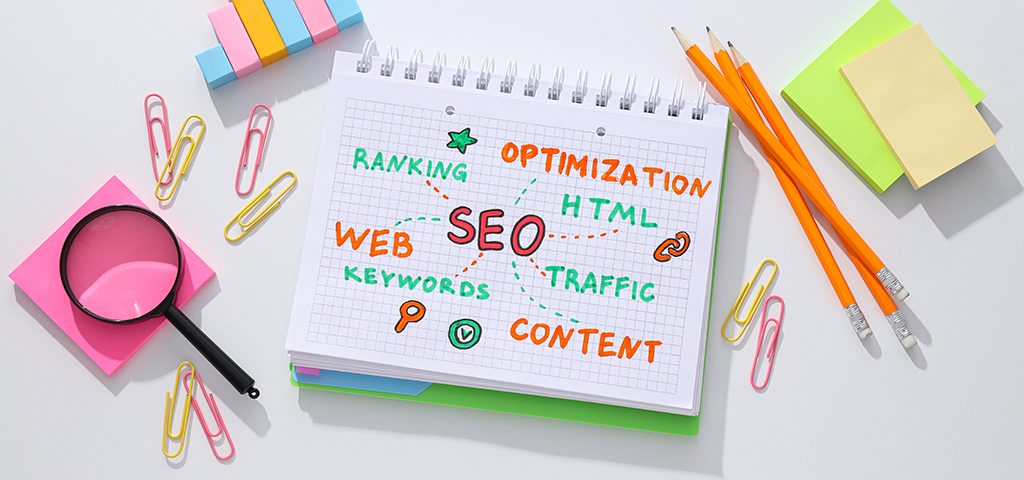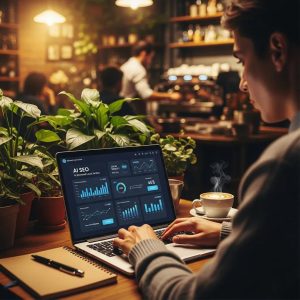
Mastering Search Engine Optimisation (SEO) is crucial in the digital landscape for boosting your website’s rankings. On-page SEO focuses on optimising individual pages to improve their visibility in search engine results. By refining both content and technical elements, search engines can better understand your site and connect it with relevant user queries.
What Is On-Page SEO?
On-page SEO, sometimes called on-site SEO, involves optimising various elements of your web pages. These elements range from content to technical aspects like metadata. While off-page SEO (like backlinks) is important, on-page SEO lays the foundation for search engines to crawl, index, and understand the relevance of your site’s content.
Why Is On-Page SEO Important?
Before diving into the specific techniques, it’s important to understand why on-page SEO matters. It is the primary method by which search engines understand what your website is about. By optimising your web pages, you are directly influencing your website’s ability to rank higher for relevant search terms, drive more traffic, and provide users with valuable information that meets their needs.
Essential On-Page SEO Techniques
Let’s explore some key on-page SEO techniques that every website owner should consider for optimal search performance.
1. High-Quality Content Creation
Importance of Quality Content
Content remains king in the world of SEO. Search engines aim to deliver relevant and valuable content to users, so it’s crucial that your website provides informative, high-quality content that addresses user intent.
How to Create SEO-Friendly Content
- Understand User Intent: Focus on what users are looking for when they search for specific keywords. Are they looking for information, a product, or a solution to a problem? Your content should match these intents.
- Engage with Comprehensive Content: In-depth content generally ranks better. Ensure your pages are filled with well-researched, authoritative information.
- Keyword Research: Use tools such as Google Keyword Planner or SEMrush to find relevant keywords. Use long-tail keywords to target more specific search queries.
- Content Structure: Divide your content into easy-to-read sections using headings, bullet points, and numbered lists.
2. Optimise Title Tags and Meta Descriptions
Crafting Effective Title Tags
Title tags are one of the most critical on-page SEO elements. A title tag is the main heading that appears in search results and plays a significant role in determining whether users will click through to your site.
Best Practices for Title Tags
- Incorporate Primary Keywords: Ensure that your primary keyword appears naturally within the title tag. Ideally, it should be towards the beginning.
- Keep it Concise: The ideal length for title tags is between 50-60 characters. Any longer, and it might get truncated in search results.
- Make it Engaging: Create titles that encourage users to click, while still maintaining relevance and clarity.
Writing Meta Descriptions That Convert
Meta descriptions, while not a direct ranking factor, can influence click-through rates (CTR). A compelling meta description should summarise your content and include a call to action.
Optimising Meta Descriptions
- Be Descriptive and Persuasive: Give users a reason to click by highlighting the benefit or value of your content.
- Use Keywords Naturally: While keywords don’t directly impact rankings, using them in meta descriptions can improve CTR when they appear bolded in search results.
- Keep Within the Limit: Google generally displays the first 155-160 characters, so keep your meta description concise.
3. Use Headings and Subheadings Effectively
The Role of Headings in SEO
Headings (H1, H2, H3, etc.) structure your content and make it easier for search engines to understand the hierarchy of your information. They also make your content more readable for users.
Best Practices for Headings
- H1 Tags: The H1 tag should be reserved for the main heading of the page, typically the title. This tag signals to search engines what the primary topic of the page is.
- Subheadings (H2, H3, etc.): Use subheadings to break your content into sections. They should also contain relevant keywords where appropriate but avoid keyword stuffing.
4. URL Structure Optimisation
Why Optimise URLs?
A well-structured URL helps both users and search engines understand what a page is about. Short, descriptive URLs often rank better than long, complex ones.
H3: Tips for URL Optimisation
- Keep It Simple and Descriptive: Use words that accurately describe the page content. Avoid unnecessary numbers or special characters.
- Use Keywords: Incorporate relevant keywords into your URLs, but keep them natural and concise.
- Use Hyphens to Separate Words: Google recommends using hyphens rather than underscores in URLs, as hyphens make it easier for search engines to parse the words.
5. Internal Linking
The Importance of Internal Links
Internal links are crucial for on-page SEO as they help search engines understand the structure of your website. They also distribute page authority and guide users to relevant pages.
How to Implement Internal Links
- Link to Related Content: Ensure that your internal links are natural and relevant. Linking to unrelated pages can confuse users and dilute your SEO efforts.
- Use Descriptive Anchor Text: Use keyword-rich anchor text to describe the linked page’s content. Avoid generic terms like “click here” as anchor text.
- Maintain a Logical Structure: Aim to link to important pages from various places across your site to ensure they receive enough link equity.
6. Image Optimisation
The Role of Images in SEO
Images play an essential role in enhancing user engagement. However, they can also impact page load times and SEO rankings if not optimised correctly.
Techniques for Image Optimisation
- Use Descriptive File Names: Before uploading images, rename the files to something descriptive and relevant to the content.
- Add Alt Text: Alt text helps search engines understand what an image is about and improves accessibility for users with disabilities. Use relevant keywords in the alt text but keep it natural.
- Compress Images: Large image files can slow down your website. Use tools to compress images without sacrificing quality to improve loading speeds.
7. Mobile-Friendliness
Why Mobile Optimisation Is Crucial
With mobile-first indexing now the norm, Google primarily uses the mobile version of a website for ranking and indexing. If your website isn’t optimised for mobile, you could lose valuable traffic.
How to Optimise for Mobile
- Responsive Design: Ensure that your website design adjusts to different screen sizes.
- Fast Loading Times: Mobile users expect quick loading times. Minimise CSS, JavaScript, and image sizes to improve performance.
- Check Mobile Usability: Use Google’s Mobile-Friendly Test tool to see how mobile-friendly your website is and make necessary adjustments.
8. Page Speed Optimisation
The Impact of Page Speed on SEO
Page speed is a ranking factor, especially on mobile devices. A slow-loading website can result in higher bounce rates and reduced rankings.
Ways to Improve Page Speed
- Enable Browser Caching: Allow users’ browsers to store copies of your pages locally to reduce load times on return visits.
- Minify Code: Remove unnecessary characters and spaces from HTML, CSS, and JavaScript files.
- Use Content Delivery Networks (CDNs): CDNs distribute your website’s content across multiple servers worldwide, reducing load times by delivering content from a server nearest to the user.
9. Optimise for Featured Snippets
What Are Featured Snippets?
Featured snippets are highlighted boxes that appear at the top of Google’s search results. Optimising your content for featured snippets can significantly increase your visibility and click-through rate.
How to Optimise for Featured Snippets
- Answer Questions Clearly: Structure your content to answer common questions that users may ask.
- Use Bullet Points and Numbered Lists: These formats are more likely to be pulled into featured snippets.
- Add FAQ Sections: Incorporating frequently asked questions at the end of your blog posts or pages can increase the chance of appearing in a snippet.
Essential Final Thoughts on Effective On-Page SEO TechniquesFinal Thoughts
On-page SEO is crucial for ensuring that your website stands out to both users and search engines. By applying these techniques, such as optimising your content, metadata, and improving technical aspects like page speed and mobile responsiveness, you can significantly enhance your website’s performance.
Success in SEO requires continuous effort and adaptation. Search engines frequently update their algorithms, and user behaviour evolves over time. Therefore, consistently refining and updating your on-page SEO strategies will not only help maintain your rankings but also allow your site to grow and thrive in an increasingly competitive digital landscape.




